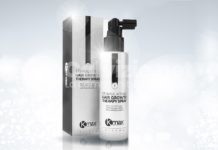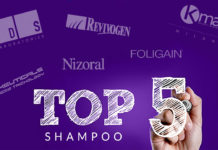Title: The use of human skin fibroblasts to obtain potency estimates of drug binding to androgen receptors.
Author: Eli C, Edelson SK
Address: J.Clin Endocrinol Metab 1984 Jul; 59(1):51-55
Abstract
Although several drugs with antiandrogenic properties have been used to treat such conditions as prostatic carcinoma, precocious puberty, acne, and hirsutism, their relative strengths in human tissues are not known.
Most of the compounds that are effective clinically in opposing androgen action interact with the androgen receptor in various assay systems. To determine in human cells the relative potencies of these agents as well as others with androgenic properties, we measured the abilities of various compounds to compete with [3H]dihydrotestosterone [(3H]DHT) for androgen-binding sites in dispersed human genital skin fibroblasts at 22 degrees C. The concentrations of unlabeled DHT, methyltrienolone (a synthetic non- metabolizeable androgen), and testosterone required for 50% inhibition of [3HJDRT binding were similar, approximately 1 riM [0.87+1-0.12 (+1- SE), 1.18+1-0.18, and 1.01 +A 0.20 riM, respectively].
The relative binding activities, defined by the ratio of the concentration of methyltrienolone to the concentration of competitor required for 50% displacement of [311]DHT, were as follows: spironolactone greater than ~956 (a synthetic antiandrogen) greater than megestrol acetate greater than cyproterone acetate greater than estradiol greater than flutamide much greater than testolactone greater than cimetidine.
Danazol, an androgen agonist that causes hirsutism, was nearly as effective as spironolactone in its ability to compete for the fibroblast androgen receptor, 50% inhibition of fibroblast [3H]DRT binding was achieved by 1.76+1-0.31 nM spironolactone and 2.85+1-0.50 tiM danazol.
Two other compounds that induce hirsutism, diphenylhydantoin and diazoxide, did not displace [3H]DHT. We conclude that 1) of the compounds tested, spironolactone, which is rapidly metabolized in vivo to a much less potent competitor, is the most potent antiandrogen in its ability to interact in vitro with human skin fibroblast androgen receptors; 2) estradiol is a relatively potent androgen receptor binder; and 3) this receptor assay, combined with metabolic clearance and pharmacokinetic considerations, should be useflil in selecting drugs for androgen and antiandrogen therapy.





























